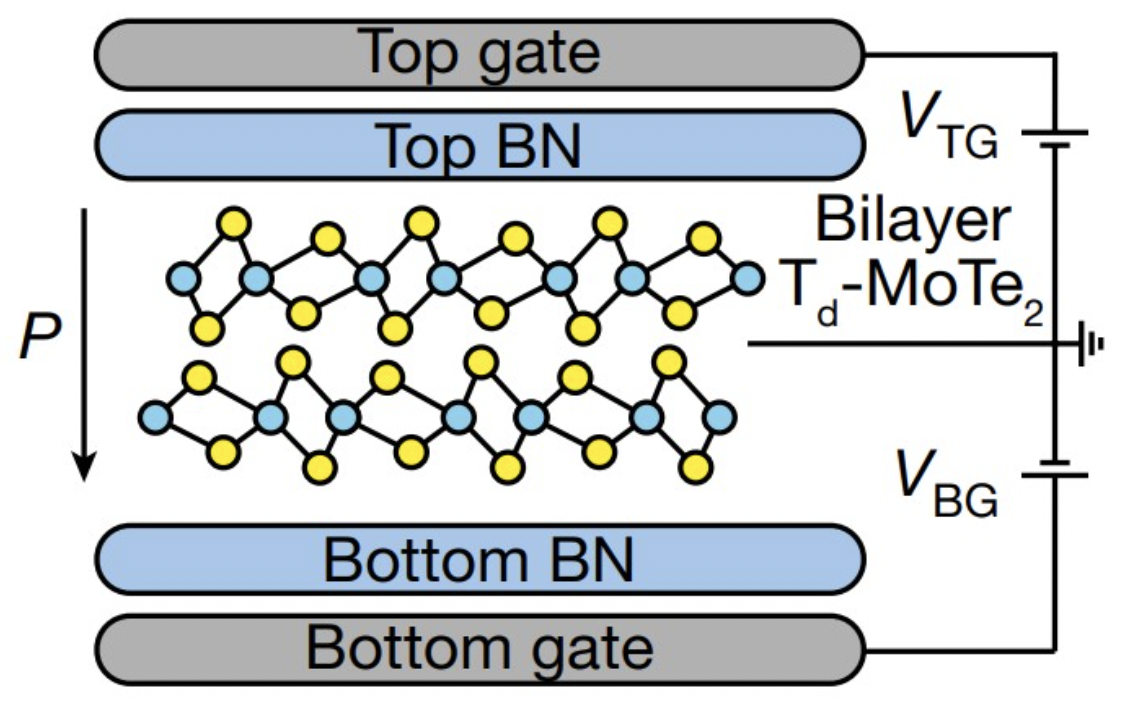 For the first time, a team comprised of two IRG-1 theorists (Birol and Fernandes) working with experimentalists from other institutions (including the Columbia MRSEC) showed the coexistence of ferroelectricity (i.e., electrostatically switchable macroscopic dipole moment) and superconductivity in a two-dimensional superconductor. The material is bilayer MoTe2, a member of the family of transition metal dichalcogenides, which are compounds of high interest in IRG-1. This important result opens a new avenue to the control of superconductivity by electrostatic means. The IRG-1 team’s theoretical approach combined first-principles and model calculations. Theoretical calculations were performed by IRG-1 student Amartyajyoti Saha. The theoretical analysis attributes the unique superconducting behavior of MoTe2 as a function of gating to an unconventional pairing state, thus shedding new light on the phenomenon of superconductivity in two-dimensional materials, of broad interest.
For the first time, a team comprised of two IRG-1 theorists (Birol and Fernandes) working with experimentalists from other institutions (including the Columbia MRSEC) showed the coexistence of ferroelectricity (i.e., electrostatically switchable macroscopic dipole moment) and superconductivity in a two-dimensional superconductor. The material is bilayer MoTe2, a member of the family of transition metal dichalcogenides, which are compounds of high interest in IRG-1. This important result opens a new avenue to the control of superconductivity by electrostatic means. The IRG-1 team’s theoretical approach combined first-principles and model calculations. Theoretical calculations were performed by IRG-1 student Amartyajyoti Saha. The theoretical analysis attributes the unique superconducting behavior of MoTe2 as a function of gating to an unconventional pairing state, thus shedding new light on the phenomenon of superconductivity in two-dimensional materials, of broad interest.